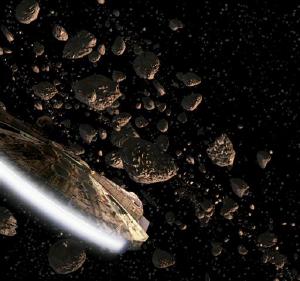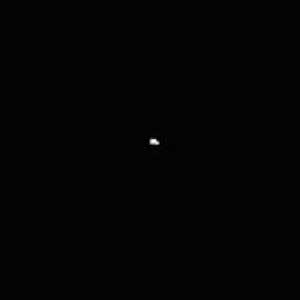Blog
Never Tell
Me the Odds
12 March 2014
Just how cluttered with rocks is the asteroid belt? The answer might surprise you.
 Wookiepedia
WookiepediaYou might think it is pretty packed, since it contains about 80,000 asteroids larger than a kilometer. There are even more smaller asteroids, because the distribution of asteroids follows a power law size distribution. For example, with a power law of 1, for every 100 meter wide meteoroid there would be 10 with a diameter of 10 meters and 100 with a diameter of 1 meter. Based upon observations of the Spitzer telescope, asteroids follow a power law of about 2, which means there are likely about 800 trillion asteroids larger than a meter within the belt. That’s a lot of rock. So much that sunlight scattering off the asteroid belt and other dust in the solar system is the source of zodiacal light.
 NASA
NASABut there is also a lot of volume within the asteroid belt. The belt can be said to occupy a region around the Sun from about 2.2 to 3.2 times the distance from the Earth to the Sun from the Sun (AU), with a thickness of about 1 AU. A bit of math puts that at about 50 trillion trillion cubic kilometers. So even though there are trillions of asteroids, each asteroid has billions of cubic kilometers of space on average. The asteroid belt is hardly something you would consider crowded.
It should be emphasized that asteroids in the belt are not evenly distributed. They are clustered into families and groups. But even such clustering is not significant compared to the vast space it occupies.
You can even do a very rough calculation to get an idea of just how empty the asteroid belt actually is. If we assumed that all the asteroids lay within a single plane, then on average there is 1 asteroid within an area roughly the size of Rhode Island. Within the entire United States there would be about 2000 asteroids, most of them only a meter across. The odds of seeing an asteroid along a cross-country road trip, much less hitting one, would be astoundingly small. So you can see why we don’t worry about space probes hitting an asteroid on their way to the outer solar system.